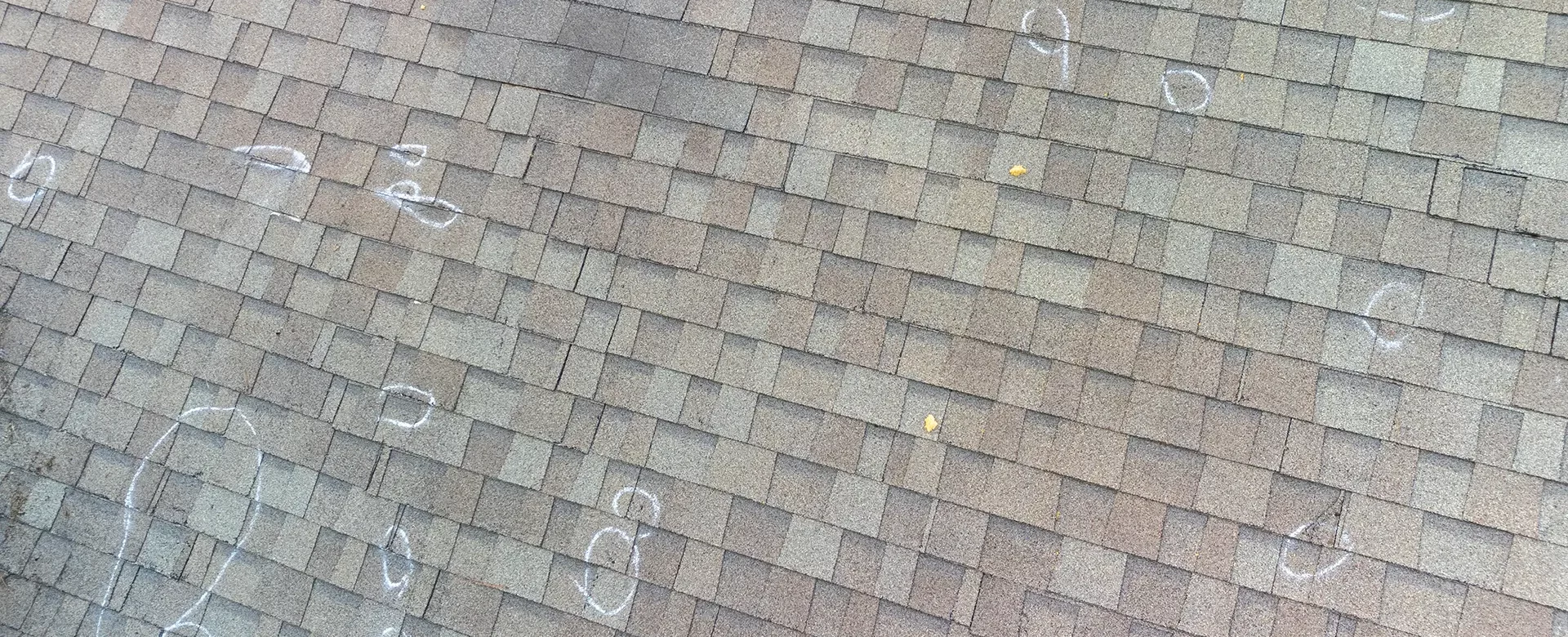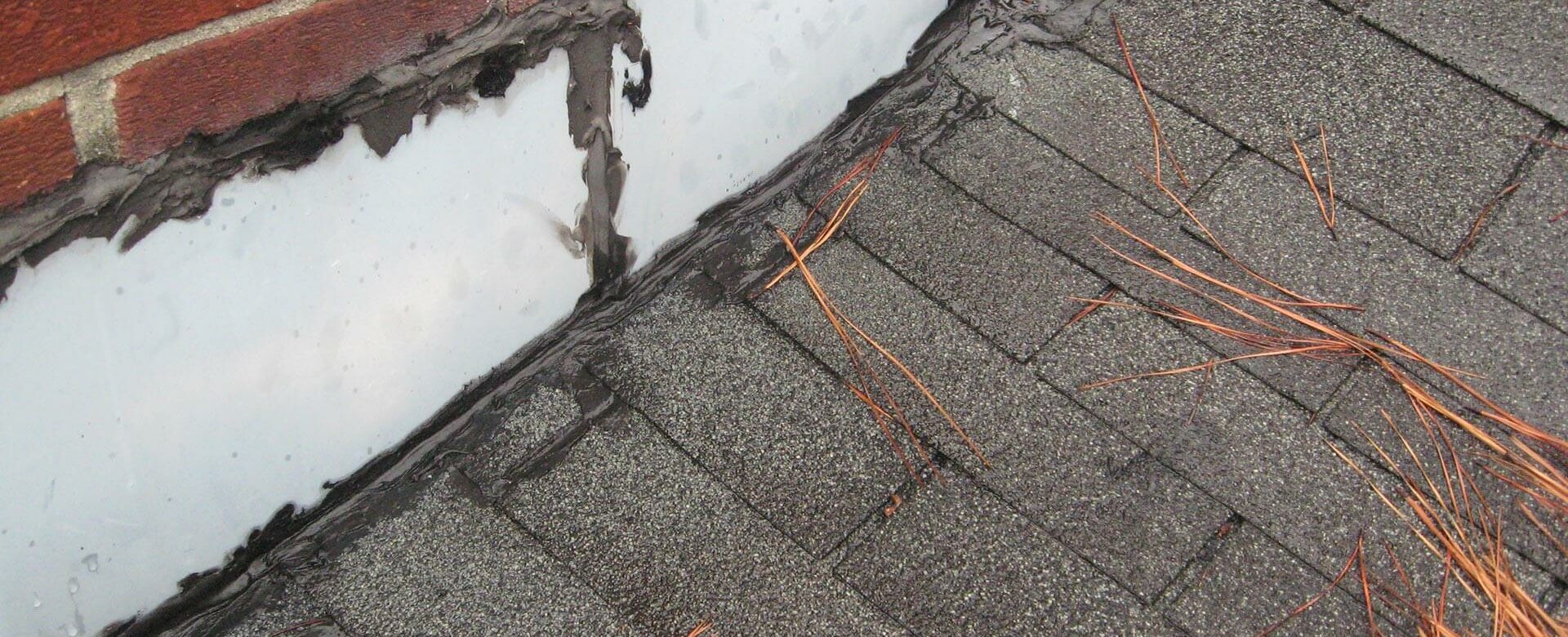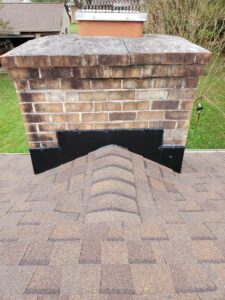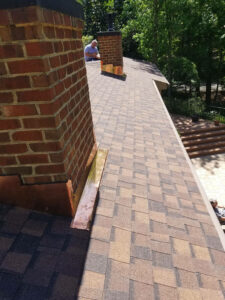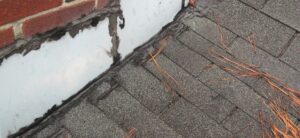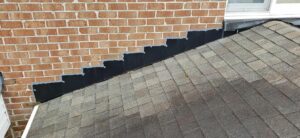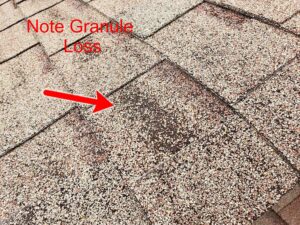Recently Hampton Roads has experienced a rash of late-spring severe weather events, which have included small hailstorms. You may have experienced damage to your property from these storms that was obvious: cracked windows, dented car hoods, beaten or broken plants and landscaping. But did you know there may also be damage that you can’t see immediately?
Small hail, generally considered to be less than 1 inch in diameter (think pea to marble-sized), can still cause damage to your home’s asphalt fiberglass shingled roof – especially over time and with repeat incidents. The impact may seem minimal, but if these types of severe storms continue as they have been, there are signs you should keep an eye out for and damage that can add up.
Granule Loss
The most common damage that occurs from small hail is the dislodging of the protective granules on the surface of the shingles. These granules shield the underlying asphalt and fiberglass layers from direct sunlight, which causes UV damage and weathering. Even small hail can have a big impact on your roof if the storm is long enough, severe enough, or if the hail events happen repeatedly.
What you are likely to notice if this damage occurs is granules accumulating in your gutters and downspouts after a hail event or rainstorms that occur shortly after the hail event. When the granules are degraded, you’ll start to notice shingles that are brittle, and that will begin to crack and fail over time.
Bruising and Indentations
Small hail is unlikely to puncture your shingles; however, it can cause small indentations or bruises on the shingle surface. These impact points can weaken the shingle structure at a microscopic level. Pressure from the hailstones (especially in the case of slightly larger hail), can actually cause the asphalt layer to compress, while also crushing the asphalt granules. While these compression points may not immediately cause leaks, they can create points of weakness where cracking or further granule loss is more likely to occur – especially when temperatures change.
Exposure of the Fiberglass Mat
In some cases, if the hail is severe or torrential enough, the impact can be forceful enough to not only remove granules but also damage or expose the fiberglass mat beneath the asphalt. This mat is what provides tensile strength to each shingle, so even small tears or damage to the fiberglass layer can increase the risk of roof damage, especially when wind becomes involved. Shingles that are damaged down to this layer should be repaired and replaced as soon as possible to prevent further damage to the roof decking.
Damage to Flashing and Other Components
Even if your shingles don’t experience significant damage, it doesn’t quite mean you’re in the clear. Small hail can still damage metal flashing around vents, chimneys, and other roof penetrations by denting or loosening them. Gutters and downspouts can also sustain minor dents from small hail or loosening from the roof edge or side of the home. While this may not cause an immediate leak, it can affect their functionality, which over time can cause water damage to other parts of your home. It may also simply affect the aesthetics of your home’s exterior.
Bottom Line: Accelerated Weathering
The cumulative effect of this type of hail damage (granule loss, bruising, fiberglass exposure, denting) can accelerate the overall weathering process of your roof. Exposed asphalt deteriorates faster; the shingles lose their flexibility and become more brittle and likely to break. This can shorten the lifespan of your entire roof, while also making it more susceptible to damage from other types of subsequent weather events.
Things to Consider:
- Age and Condition of the Roof: Older roofs or those already in poor condition are more susceptible to damage from even small hail. Brittle shingles will be more easily damaged.
- Duration and Intensity of the Hailstorm: A prolonged storm with even small hail can cause more cumulative damage than a brief one.
- Wind: Small hail accompanied by strong winds can exacerbate the damage by driving the hailstones with more force and potentially lifting shingle edges, making them more vulnerable to impact.
What to Do Next
It’s always a good idea to have your roof inspected by a qualified professional after any hailstorm, even if the hail appears small, to assess for potential damage that might not be immediately visible. This is especially true for older roofs, roofs with existing damage or in the case of severe, prolonged, or repeated hail events.
The professionals here at Andrews Roofing are highly experienced with the Hampton Roads region and the types of damage that are common with our weather conditions. As a locally owned and operated licensed roofing company, we do our best to treat every customer like our neighbors – because they are! Contact us today if you have any concerns about the condition of your roof after a severe southeast Virginia weather event.
